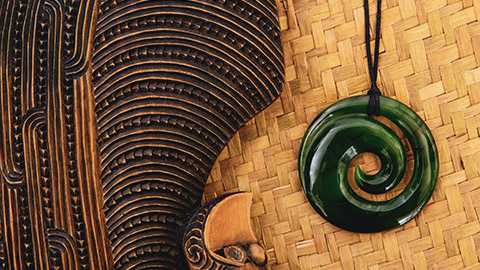Proper planning and preparation prevents poor performance.Stephen Keague, the little red handbook of public speaking and presenting
Glossophobia
Symptoms include:
- Intense anxiety prior to speaking, or simply at the thought of having to verbally communicate with any group
- Avoidance of events which focus the group’s attention on individuals in attendance
- Physical distress, nausea, or feelings of panic in such circumstances.
Why are we afraid of public speaking?
One study indicates that up to 75% of people experience feelings of stress or anxiety when faced with public speaking.
Reasons for this may include:
- Fear of rejection.
- Fear of being judged or evaluated.
- Fear of being ostracised.
According to most studies, people’s number one fear is public speaking. Number two is death. Death is number two. Does that sound right? This means to the average person, if you go to a funeral, you’re better off in the casket than doing the eulogy.Jerry Seinfeld
- Understand your topic: If you know what you are talking about, you will feel more confident.
- Allow for questions at the conclusion of your presentation: By anticipating possible questions, you can have pre-prepared answers or solutions.
- Speak slowly: Really slowly. When your heart rate quickens, so will your speech.
- Your audience wants you to do well: No... Really, they do.
- Say thank you: Your audience will thank you back.
- Focus: Focusing on friendly, attentive people in the audience has been found to help.
- Do not take yourself too seriously: Mistakes are often unnoticed by audiences.
- Rely on visuals during your presentation.
Well-designed visuals do more than provide information; they bring order to the conversation.Dale Ludwig
How can you be a better audience member?
Show interest in their presentation, this includes body language. Give the speaker your full attention. Show respect by not speaking with other audience members during the presentation. Eye contact is important, make eye contact with the presenter.
Consider the following pointers on presentation skills and check each one off when the time comes to create your own presentation.10
Visual Communication
Visual information is the first thing that forms the audience’s impression. Good presentations include effective and influential slides. Your presentation should not contain more than 100-word text slides.
Interpersonal communication
Giving a good presentation is unimaginable without building a rapport with the audience. Effective interpersonal communication means convincing each member of the audience that you’re speaking directly to them.
Verbal communication
Speaking in a clear and confident way is key to delivering your message to the audience. Verbal communication is the most obvious part of our communication and plays a major role in presentation as well.

Humour
Using humour is an effective way to engage the audience during a presentation. Including a few light-hearted slides can be a great idea to increase your audience’s mood.
Storytelling
Storytelling means the ability to tell an inspiring story, which is an important presentation skill.
Attracting the audience
To inspire your audience, you need to attract them in the first place. A great balance between verbal and non-verbal communication, as well as engaging visual materials, leads presenters to attract the audience.
Keeping things simple
Sometimes you give presentations about topics that are unfamiliar to the audience. Considering this, there’s no need to make things complicated. By keeping things simple, you’ll avoid confusing your audience.
Using body language
Body language accounts for as much as 55% of our communication. Effective presenters try to control their bodies, gestures and pose in order to make an impact on the audience.
Managing emotions
Sometimes people don’t like the way you present things or are not interested in the topic. However, rejection shouldn’t affect your self-image. Effective presenters know how to deal with the stress of public speaking and manage their emotions.
Self-awareness
Being self-aware means knowing your strengths and weaknesses. And this, in turn, helps you to use your strengths and work on improving your weaknesses.
Leadership
A presenter plays the role of leader for the audience. Even if leadership isn’t natural to your personality, acting as a leader will help you to manage the audience.
Focus on the audience
Your presentation should be centred on the audience, not on yourself. The main purpose of the presentation is to engage the audience. So, good presenters pay attention to the needs and preferences of the people listening to them.
Active listening
Ending your speech doesn’t mean that the presentation is also finished. The presentation is a bilateral process between the presenter and the audience. Therefore, you should listen actively to the audience in order to find out their reactions and opinions.
Time organisation
No one listens to your presentation for hours. Studies show that the optimal length of a presentation is 20 minutes. While a 10-minute presentation might be too short to deeply understand a topic, giving a speech for more than 20 minutes is too much as people lose interest and find it difficult to concentrate.
Doing research
A good presenter is an expert on the topic he or she’s speaking about. Doing deep research and finding statistics, facts, or examples about the main topic is an important presentation skill.
Take a look at the following video and take note of what works:11
Opening hook
Did you see how powerful the opening hook is?
Start your presentation with:
- A story
- a metaphor
- a shocking statistic
- an analogy
- a question
Transition to topic
Bridge the gap between the hook, and what you are going to talk about in your presentation.
Self-intro and preview
Once the audience is drawn in;
- introduce yourself briefly (keep it brief – no need for a full bio)
- give a preview of what your presentation will entail.
Audience benefit
Tell the audience what they will gain from listening to your talk – you should be specific.
These tips and tricks should have given you some pointers for preparing your own presentation for your marketing campaign.

It is important to consider how the Treaty of Waitangi might implicate your presentation – whether you are Māori or non-Māori.
What is a treaty?
Throughout our lives, we make agreements with others. They can be informal and unwritten (for example, being friends with someone, going out on a date, arranging to meet somewhere for coffee) or more formal and often written (for example, signing a rental agreement, getting a purchase, buying a purchase a house). What these agreements do is outline the responsibilities and obligations of the relationship between you and the other person or party. You could also call these agreements a contract, compact or even a treaty.
The term ‘treaty’, however, is usually reserved for the agreements that are made between countries or groups of people (for example tribes, ethnic groups).
A binding formal agreement, contract, or other written instrument that establishes obligations between two or more subjects of international law (primarily states and international organisations).Encyclopedia Britannica12
On 6 February 1840, the Treaty of Waitangi/Te Tiriti o Waitangi was signed at Waitangi in the Bay of Islands by Captain William Hobson, several English residents, and between 43 and 46 Māori rangatira.13
The treaty governs and ensures both Māori and Pakeha (non- Māori) are protected. New Zealand Immigration explains that it does this by;
- accepting that Māori iwi (tribes) have the right to organise themselves, protect their way of life and control the resources they own
- requiring the Government to act reasonably and in good faith towards Māori
- making the Government responsible for helping to address grievances
- establishing equality and the principle that all New Zealanders are equal under the law.14
The story of Te Tiriti o Waitangi
Te Tiriti o Waitangi/The Treaty of Waitangi is an agreement signed by the sovereign independent Māori tribes (iwi) and the representatives of the British Crown. It is considered one of the founding documents of Aotearoa and set out the obligations and responsibilities of how Māori and the Crown (on behalf of the British settlers) would live together peacefully in Aotearoa.
At the time of the signing of the treaty, the Māori population was around 100,000; the number of settlers was only 2,000.
There has been much written about how Te Tiriti o Waitangi was written, how it was signed, and the subsequent ‘journey’ of the treaty around Aotearoa.
Te Ara: The Encyclopedia of New Zealand provides a good overview of the story of the Treaty of Waitangi – click on the link and read the story.
For further information, you can read and watch some other resources online at the website of Te Papa Tongarewa Museum of New Zealand.
From the sources you have just looked at, we know the following facts:
- Te Tiriti o Waitangi was signed on 6 February 1840.
- William Hobson was the Crown representative.
- The missionary Henry Williams and his son Edward translated the English draft into Māori.
- More than 40 Māori chiefs signed Te Tiriti/the Treaty at Waitangi.
- Two versions of the Treaty existed – English and Māori.
- The textual differences between the two documents have been a source of much debate and disagreement.
- Breaches of Te Tiriti have led to conflict and the oppression of tangata whenua.
The Treaty principles
The Treaty principles are sometimes referred to as the three "P's". They are:
- Partnership
- Protection
- Participation.
These principles have different meanings across different industries. In the Health sector participation could be the medical staff and patients working closely together with the goal of better health. Whereas participation in the Education sector could mean Māori whānau involvement in school planning and a reflection of the biculturalism of Aotearoa.
Overall, no matter the sector or industry, the principles ensure partnership with engaging Māori communities, participation in decision-making and equity for Māori, and the protection of Māori culture, identity, values and tāonga.16
Partnership
Acknowledges sovereignty/governance and working together with the same rights and benefits as subjects of the Crown. This principle is about equality and equity between Māori and all other New Zealanders. It is working together at all levels of an organisation and having a say in the policy and management of organisations. It means engaging with Māori in the community when you plan work that affects them.
Protection
Acknowledges the protection of rights, benefits, and possessions. As well as ensuring equal rights and protecting possessions, it means that Māori tikanga (culture and protocols) and taonga (treasures) such as te reo Māori (Māori language) are respected and given equal footing to the tikanga and taonga of other cultures.
Participation
Acknowledges sovereignty and governance. Participation means ensuring equal participation at all levels and that Māori have input into decision-making directly affecting them.
Elements of culture
Culture can be defined as “the ideas, customs and social behaviours of a particular people or society”. It is worth noting that culture is not defined along geographical or racial lines. It applies to groups of people.
When discussing culture in sociological terms, we often refer to the element of culture. These elements help us understand more about the context of cultural elements being appropriated.
Symbols
Symbols can be a form of nonverbal communication. They can be placeholders that are intended to represent something else and to evoke emotion by association.
Māori symbols hold value and meaning. Being aware of these symbols and the significance they hold, will allow you to identify where they could be inappropriately used or respectfully incorporated within a marketing campaign.
The koru represents new beginnings, growth, and regeneration in pounamu carving. In tāmoko, the koru represents parenthood, genealogy, and ancestry.
Language
Languages, both written and spoken, are some of the most significant ways culture is shared and passed on. A shared language is essential to the development and evolution of a culture.
While English is the predominant language spoken in New Zealand, Māori and New Zealand Sign Language are afforded special protection and recognition as the two official languages in Aotearoa New Zealand. These were established by the Māori Language Act 1987 and the New Zealand Sign Language Act 2006.
You can help support Te Reo Māori by making an effort to get the pronunciation right and using simple words and phrases in everyday conversation. Te Aka (Māori Dictionary) is a great resource and includes recordings of words so you can check pronunciation.
Norms
Norms are the standards and expectations of behaviour. It is how people within a culture expect others to behave in different situations. These expectations can be formal, like laws and codes that are enforced, or informal customs and standards that, while still considered important, are not enforced.
Tikanga is the Māori concept of behaving in a way that is correct. It is a customary system of values and practices that have developed over time and are deeply embedded in New Zealand’s social context.
Different cultures have different norms, and it is important to be mindful of this. In many western cultures, eye contact while speaking is considered an act of respect. In some pacific cultures, direct eye contact can be regarded as disrespectful.
Values
Every culture has values. They help members judge what is right or wrong, good or bad, desirable or undesirable. The values help to shape the norms.
In many western cultures, individualism is highly valued. “Become independent”, “standing on your own two feet”, and “looking out for number one” are examples of phrases that might have a positive meaning in these cultures.
Other cultures value the collective, the community, and the family higher than the individual. You might see extended families living together, younger members taking more responsibility for their siblings, and multi-generational households.
Attitudes towards work, education, and the environment are all influenced by cultural values.

Artefacts
Artefacts are physical objects that have significance to a culture. We often think about artefacts in relation to ancient civilisations. We imagine archaeologists digging them out of the ground in places like Egypt.
All cultures have artefacts. The carvings that adorn a marae, or the pounamu taonga gifted to Iwi/tribe members, photos or paintings of ancestors are all examples of artefacts.
The role of non-indigenous designers
Getting it right
‘Non-indigenous designers need to understand their role as an ally and partner in design initiatives where indigenous context, knowledge or forms are core to the outcome, and to consider ways to avoid holding spaces where indigenous designers could be’ (Barbarich et al. 2017).
It is that no matter how familiar you are with Māori culture; it is worthwhile spending some time researching the cultural significance of your proposed branding and intellectual property. It is also a mistake to assume that because a person is of Māori descent (or Pacific), they are well versed in Māori culture.17
It can be difficult to know who to consult with or to identify who has the authority to grant permission on a Māori element. There is no general rule. If engaging the services of a professional is not an option, the following are suggestions.
If using a Māori cultural element, it is essential that you create a cultural narrative around your brand or product including the usage, your thinking and where you gained inspiration from. In Māori culture, this is called ‘whakapapa’. Everything in the Māori world has whakapapa. It is also your first line of defence if someone accuses you of cultural appropriation.
Indigenous Design and Innovation Aotearoa (IDIA) have created a framework called Culture Centred Design (CCD). The framework ensures that design ‘outcomes are led, framed and informed by indigenous people, knowledge and ways of being’ (Barbarich et al. 2017). The three strands that form the CCD are tāngata /(people), mātauranga (knowledge), and tikanga (process and practice).
IDIA has also created a Cultural Integrity Scorecard of 12 yes or no questions assessing indigeneity, design, integrity, and authenticity. Designers are encouraged to use this scorecard to evaluate appropriation and cultural awareness.
If your intellectual property includes Māori elements, your application may be referred to a Māori Advisory Committee.
Getting it wrong
Over the years, there have been many examples of cultural appropriation. The examples are often highlighted by an imbalance of power and a lack of respect for the victimised culture.
In 2019 Air New Zealand attempted to trademark their masthead “Kia Ora.” Air New Zealand capitalises on the use of Te Reo Māori in its branding, yet it refused to hire a person with tā moko. The Trade Mark application was challenged with many Māori voices calling it a disgraceful act of cultural appropriation. The application was subsequently withdrawn, but only after public outcry.
Kapiti Cheese named a cheddar after a famous Māori ancestor Tuteremoana. The naming and personification were disrespectful and caused hurt to descendants of Tuteremoana with children worried they would be eating their ancestor.
Titoki Whiskey bottles represent the god of fertility, Tiki. Titoki claims to be a traditional Māori alcohol, using traditional medicines that were used by ancient spirits – But European colonisers introduced alcohol to New Zealand. There was no traditional alcohol before their arrival.
In 2020, a Christchurch art gallery apologised and removed controversial art after complaints of cultural appropriation of Māori culture. A painting by artist Rhonye McIlroy featured a white woman with a moko kauae, bare-breasted and wearing bondage. Facial tāmoko is very tapu, sacred and the painting exploited, sexualised it, and used it in a derogatory way.
Never trivialise sacred artefacts or symbols. Using artefacts and symbols in ways that do not honour or respect them to the same extent that would be expected within their own culture is a sign of cultural appropriation.
Getting tāmoko is a meaningful, cultural event. In contrast to the above examples of cultural appropriation, watch the following video which shows the significance tāmoko has to Māori.
Your presentation
If you are Tangata Whenua you may wish to open with a karakia or waiata. You could also use these to close your presentation. The following karakia has been translated into English:
E te hui / For this gathering
Whāia te mātauranga kia mārama / Seek knowledge for understanding
Kia whai take ngā mahi katoa / Have purpose in all that you do
Tū maia, tū kaha / Stand tall, be strong
Aroha atu, aroha mai / Let us show respect
Tātou i a tātou katoa. / For each other.18
If you are non-Māori; be aware, be respectful, and be a good ally. Ask questions. We all have a duty under the treaty to respect the principles – valuing and protecting Māori knowledge.
Most people prefer not to act in ways that are offensive to others, so follow these guidelines to increase awareness of Māori culture and to help avoid confusion or uncomfortable moments when people may be unsure of what to do.
Tikanga
Generally speaking, tikanga are Māori customary practices or behaviours. The concept is derived from the Māori word ‘tika’ which means ‘right’ or ‘correct’ so, in Māori terms, to act in accordance with tikanga is to behave in a way that is culturally proper or appropriate.19
The basic principles underpinning the tikanga around speaking are common throughout New Zealand. However, different iwi (tribes), hapū (sub tribes) and marae (Māori community meeting places) may have their own variations. These guidelines relate to practices endorsed by Te Kawa a Māui, the School of Māori Studies, and modelled at the University’s Te Herenga Waka Marae, and are relevant for any university campus or event.
Speaking tikanga
Avoid entering and crossing a room while someone in authority is addressing an audience. To avoid offence, either wait quietly by the door until there is a break in the dialogue or, when that is not appropriate, enter as discretely as possible. Try not to walk directly in front of the speaker or, if you cannot avoid it, crouch down as you pass as a sign of respect. Why? Traditionally Māori society is very hierarchical and crossing in front of a more ‘senior’ person is considered rude.19
Your task is to write the introduction to your final presentation (you will be able to change it later), using the four tips for a great presentation introduction.
Remember to include the following:
- A bold opening; a question, statistic, analogy or story
- A transition from opening into your topic of presentation
- An introduction of yourself
- A summary of what audience what they will get out of your presentation
Do be respectful of Māori customs and culture, and consider Te Tiriti O Waitangi in your presentation. Include Māori customs or a karakia if you feel comfortable doing so.

Criticism vs feedback
‘You must leave complaining behind if you want to provide excellent feedback that is heard, valued, and taken seriously. Complaining is essentially criticism rather than feedback. Feedback, on the other hand, is the breakfast of champions; criticism is rarely productive.
Here is the difference:
- Criticism is focused on what we do not want; feedback is focused on what we want.
- Criticism is focused on the past; feedback is focused on the future.
- Criticism is focused on weakness; feedback helps to build up strengths.
- Criticism deflates; feedback inspires.
- Criticism says, “You are the problem.” Feedback says, “We can make this better.”20
How to handle criticism
‘Nobody likes the way criticism makes them feel. But criticism is unavoidable, whether we like it or not, especially as we deliver presentations or take on leadership roles.
This process identified three important requirements for negative feedback to be constructive:
- Compassionate: People should give criticism in a way that indicates care for the recipient, and it should come from someone the recipient respects.
- It is specific: Criticism should target the appropriate elements of the recipient’s performance and offer specific guidance for improvement.
- It is a match: Criticism should align with the recipient’s emotions and motivation.’21
You can use this list to determine if a critic is trying to help or harm you.
Tips to improve your presentation
It is essential to have effective presentation abilities whether you propose a new project to your team or a client. You can communicate effectively and concisely with an audience using the following tips.
- It is always good to present the things you are passionate about. When you speak to people about your passions they can sense it. The same goes for presentations.
- Try visualising what it is you expect your audience to come away with and develop your presentation around that.
- Try to keep your presentations as simple as possible. Make it visually appealing with the least amount of words possible.
- There is a fine balance between winging the presentation and memorising the presentation.
- Try to present in a way that is cause for curiosity. Make people interested in what you have to say to captivate them.
- Presentations that are text-heavy and go on for longer than they should bore your audience, and people are less likely to remember them.
Presentations we can learn from
‘Have you ever forgotten your script or experienced a faulty projector while presenting? Well, Michael Bay sure did. At the Samsung CES press conference in 2014, he failed to promote the new Samsung curved TV. After an error with the teleprompter, he apologised and walked off the stage, leaving the audience speechless and confused.’22
It can be stressful to create the perfect presentation for an audience, especially if the presentation did not go as planned. If you had to give feedback to Micheal Bay, what would it be?
Now that we had a look at how to handle criticism and gained some tips on how to improve presentations, create a short video of the narrative arc that you have produced in Topic 1.
This is a good opportunity to practice a solo presentation that will allow you to hone your presentation skills for your Assessment.
Flim yourself using your phone while standing in front of a screen or add yourself into your presentation using After effects.
Professionalism is key.
Share your presentation with your peers in the forum for feedback.

